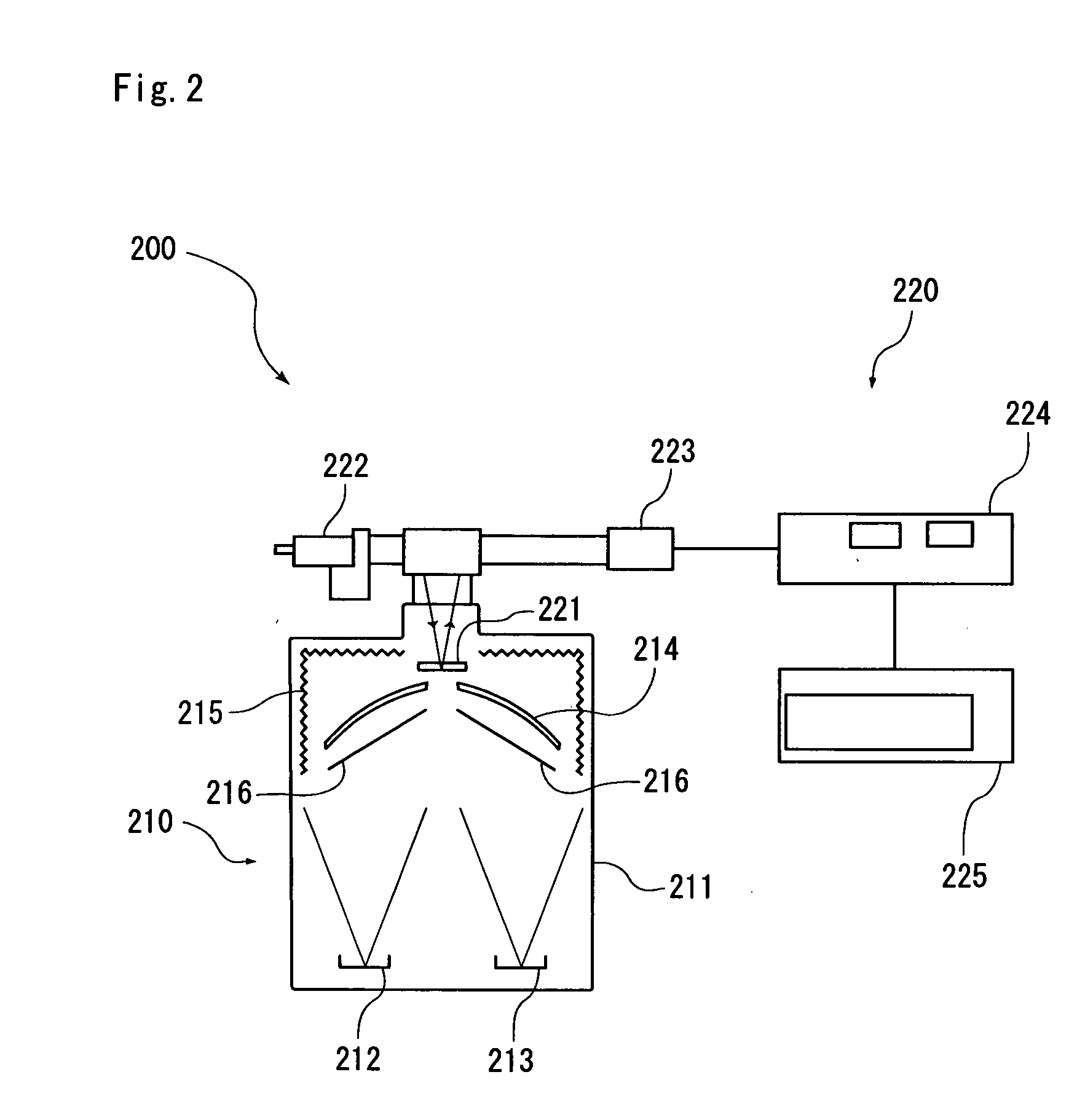Multi-layer film cut filter and production method therefor, uv cut filter, dustproof glass, display panel and projection type display unit
a film and production method technology, applied in the field of multi-layer film cut filters and production methods therefor, can solve the problems of glass substrate breaking, non-uniform projection image generation, and reduced display quality in a short tim
- Summary
- Abstract
- Description
- Claims
- Application Information
AI Technical Summary
Benefits of technology
Problems solved by technology
Method used
Image
Examples
example 2
[0090] Under the same film formation conditions as in Example 1, the film thickness constitution was so set that .lambda.=360 nm, the number of layers was 19, and the multi-layer design was 1.08L, 0.44H, 1.04L, 0.88H, 0.80L, 1.16H, 0.76L, (1.12H, 0.84L).sup.3, 1.00H, 0.92L, 1.16H, 0.60L, 1.04H, 1.80L, in this order from the substrate side.
[0091] An enlarged spectral transmittance in the vicinity of a wavelength of 410 nm of the multi-layer film cut filter obtained is shown in FIG. 6. Besides, a spectral transmittance within a wavelength range of 350 to 700 nm is shown in FIG. 7.
[0092] This layer constitution is characterized in that the number of layers was reduced in consideration of productivity, and since the stack number in the repeated alternate layer was small, the steepness of the spectral characteristic was lowered.
example 1
[0099] Example 1 and Comparative Example 1 are equal in the number of layers, but are different in the balance of film thicknesses in the repeated alternate layer. Example 1 gave a steeper spectral characteristic. Similarly, Example 2 and Comparative Example 2 are equal in the number of layers, but are different in the balance of film thicknesses in the repeated alternate layer, and Example 2 gave a steeper spectral characteristic.
[0100] In addition, the variation in optical monitor light quantity shown in FIG. 9 shows that, in the film formation of the high-refractive-index layer in the repeated alternate layer according to the prior art with H / L=1.00, the film formation must be stopped at the crest of a peak, so that the decision of the timing for stopping the film formation is difficult to make, and control of film thickness is difficult to achieve. On the other hand, it is shown that, in forming the low-refractive-index layer, the film formation can be stopped when a peak has be...
example 3
[0102] A UV cut filter comprising a UV reflection film provided on one side of a light-transmitting substrate and an antireflection coating provided on the other side of the light-transmitting substrate was produced. The ratio H / L of film thicknesses in the repeated alternate layer was set at about 1.31, thereby setting a thickness balance to make the H layers thicker. The outermost layer and the first layer in contact with the substrate were formed of SiO.sub.2.
[0103] As the material of the light-transmitting substrate, BK7 (a colorless glass plate with n=1.52) was used. As for the materials of layers, TiO.sub.2 was used for high-refractive-index layers (H), while SiO.sub.2 was used for low-refractive-index layers (L), and film formation was conducted by use of an RF ion plating apparatus (a product by SHOWA SHINKU CO., LTD.). An optical film thickness meter of the monochromatic optical monitor system was used. Correction plates broader than usual were used, and the tooling coeffic...
PUM
 Login to View More
Login to View More Abstract
Description
Claims
Application Information
 Login to View More
Login to View More - R&D
- Intellectual Property
- Life Sciences
- Materials
- Tech Scout
- Unparalleled Data Quality
- Higher Quality Content
- 60% Fewer Hallucinations
Browse by: Latest US Patents, China's latest patents, Technical Efficacy Thesaurus, Application Domain, Technology Topic, Popular Technical Reports.
© 2025 PatSnap. All rights reserved.Legal|Privacy policy|Modern Slavery Act Transparency Statement|Sitemap|About US| Contact US: help@patsnap.com



